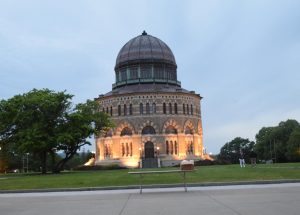Private company begins the race for clean nuclear energy
February 28, 2019
The most recently built nuclear power plant in the U.S. came online more than 20 years ago. Nuclear reactors are frequently distrusted by the public, and the costs of constructing a new plant make it nearly impossible for newly built plants to compete with energy sources like natural gas.
The Portland, Oregon-based company NuScale is working to establish nuclear power as a viable complement to renewable resources.
NuScale has designed new reactors approximately 100 times smaller than a typical reactor.
According to Science, these Small Modular Reactors (SMRs) do produce less energy than a traditional reactor, but NuScale plans to operate several at once to compensate.
The SMRs are not simply scaled-down versions of conventional technologies; they are designed to be simpler and safer, thereby reducing costs and improving public trust.
In a nuclear reactor, water cools a stopped reaction enough to prevent a meltdown. In meltdowns, like those that happened at Chernobyl and Fukushima, the core grows so hot that it physically melts the containment vessel, allowing radiation to enter the environment. In Fukushima, the emergency generators needed to pump this water failed, causing environmental contamination.
The NuScale improvements center around the cooling system that is needed to keep the nuclear fuel cool and prevent a nuclear melt-down.
According to Science, the new reactors will rely on natural convection currrents to circulate cool water around the reaction vessel, thereby eliminating the reliance on potentially breakable pumps.
The small NuScale reactors would also release far less radiation if a meltdown were to occur because the individual reactors are much smaller in scale.
Because the vessels are smaller, their containment vessels can be much smaller and thinner because the reduced diameter increases the capacity of the vessel to withstand the high pressures that could be generated in a disaster.
Critics argue that the new reactors will be less efficient, extracting less energy per ton of fuel than their traditional counterparts.
Science quotes Dr. M.V. Raman, a physicist from the University of British Colombia in Vancouver, explaining, “Inherently NuScale is giving up the advantages of economies of scale”.
NuScale’s goal is to make nuclear power safer and cheaper in one fell swoop. The smaller reactors will allow for almost complete construction of the containment vessel in a factory, minimizing on-site building costs.
The predicted cost of a NuScale plant is $3 billion for a series of 12 NuScale reactors.
This set-up would allow the plant to generate 720 megawatts of power, while a conventional plant provides around 1,000. According to the Union of Concerned Scientists USA, the cost of building a new plant rose to $9 billion per reactor, making the NuScale reactors obvious winners in terms of their energy output to construction cost ratios. Other factors, such as reduced fuel efficiency, may complicate these benefits.
Natural gas is predicted to remain more cost-effective than NuScale’s reactors by about 20 percent. Recent work at M.I.T., however, has suggested that a carbon-tax could make nuclear energy more profitable than natural gas, which releases carbon dioxide during the combustion reactions used to burn fuel and turn steam turbines.
Even if NuScale and others could convince companies of the economics of their plan, the reactors may not be built in time to significantly reduce carbon emissions.
Currently, NuScale has built a one-third scale model of their design and is using it to prove the validity of their design to the National Research Council (NRC).
The company should hear back about the fate of their design by September of 2020 and has a tentative plan to finish their first plant by 2027 if approved.






